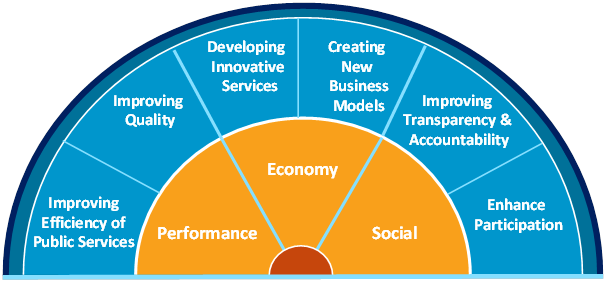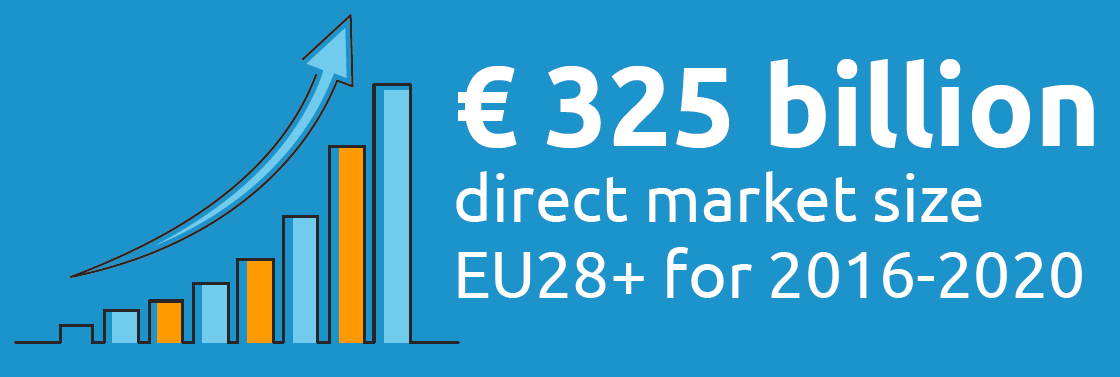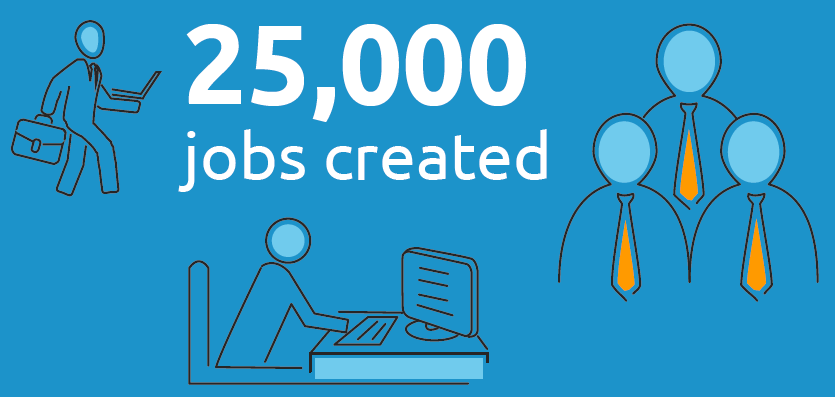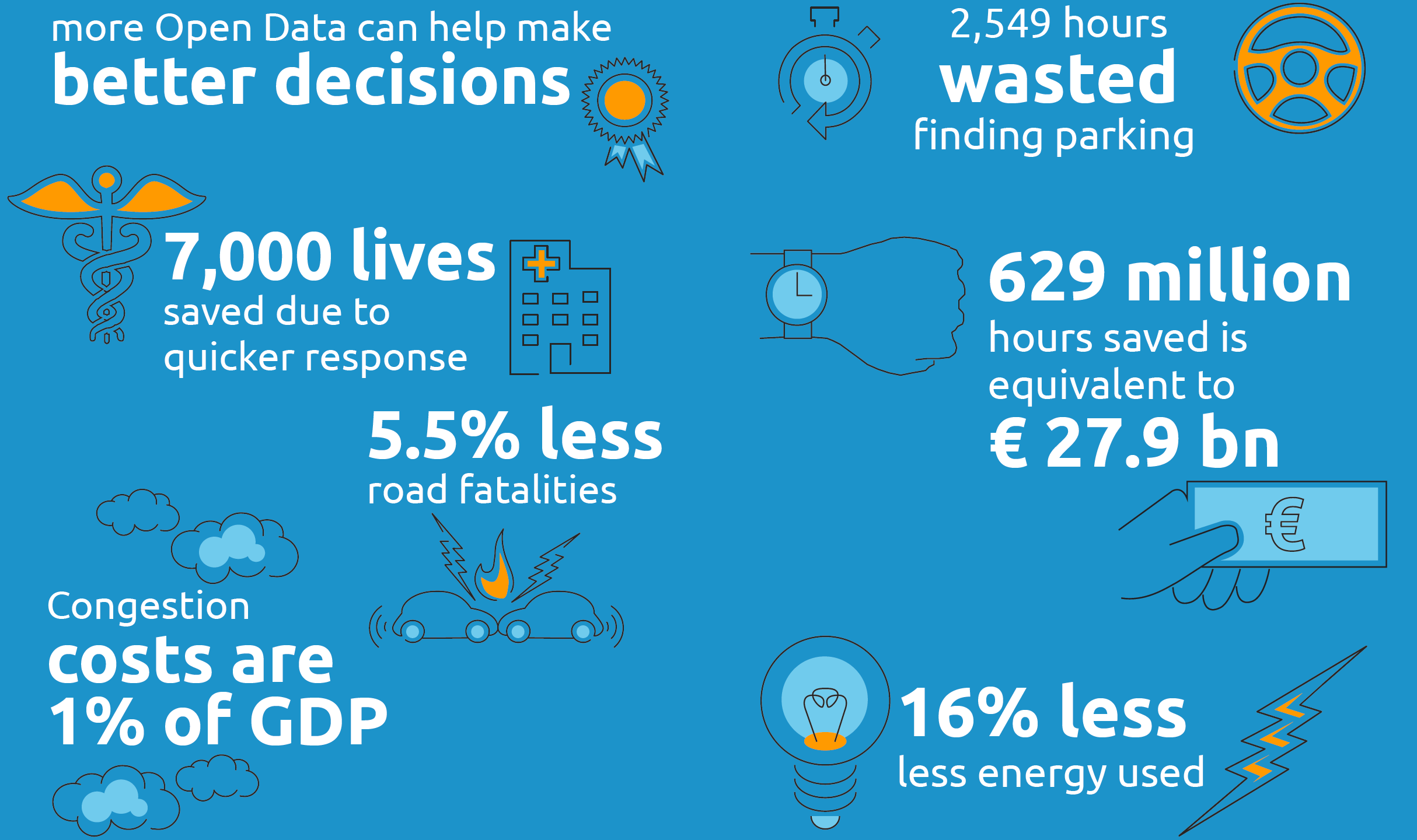Buaineann an Tairseach Sonraí Oscailte meiteashonraí Faisnéise na hEarnála Poiblí atá ar fáil ar thairseacha sonraí poiblí i dtíortha Eorpacha. Cuirtear faisnéis maidir le soláthar sonraí agus na tairbhí a bhaineann le sonraí a athúsáid san áireamh.
Is é atá i gceist le Sonraí Oscailte (Rialtais) faisnéis atá bailithe nó táirgthe ag comhlachtaí poiblí, nó sonraí ar íoc siad astu (glaoitear Faisnéis de chuid na hEarnála Poiblí orthu, leis) agus a chuirtear ar fáil saor in aisce le haghaidh a n-athúsáide chun críocha ar bith. Sonróidh an ceadúnas na téarmaí úsáide. Tugtar cur-síos mionsonraithe ar na prionsabail Sonraí Oscailte seo sa Sainmhíniú Oscailte.
Is é is faisnéis na hEarnála Poiblí ann faisnéis atá á coinneáil ag an earnáil phoiblí. Sa Treoir um athúsáid faisnéise de chuid na hearnála poiblí tugtar comhchreat dlíthiúil um margadh Eorpach le haghaidh sonraí atá á gcoinneáil ag rialtais. Tá sé tógtha mórthimpeall príomhchrainn taca an mhargaidh inmheánaigh: saorshreabhadh sonraí, trédhearcacht agus iomaíocht chothrom chóir. Is tábhachtach an rud é a thabhairt faoi deara nach Sonraí Oscailte iad gach faisnéis de chuid na hearnála poiblí.
Tá tuilleadh eolais ar fáil ar an Treoir um Fhaisnéis Earnála Poiblí agus ar ghníomhaíochtaí neamhreachtacha eile de chuid AS na Líonraí Cumarsáide, an Ábhair Dhigitigh agus na Teicneolaíochta sa réimse seo.
Tairbhí a bhaineann le Sonraí a Úsáid
Tá an iliomad tairbhí ag gabháil le Sonraí Oscailte, ina measc tá éifeachtacht fheabhsaithe na gcóras riaracháin phoiblí, fás eacnamaíoch ar an earnáil phríobháideach agus leas sóisialach níos leithne.
Is féidir feidhmíocht a fheabhsú le Sonraí Oscailte agus cabhrú chun seirbhísí poiblí a dhéanamh níos éifeachtaí. Is féidir éifeachtacht níos fearr a bhaint amach i ndáil le próisis agus seachadadh seirbhísí poiblí a bhuíochas ar chomhroinnt sonraí tras-earnála, rud a thugann forléargas ar chaiteachas neamhriachtanach, mar shampla.
Féadann rochtain níos éasca ar fhaisnéis, inneachar agus eolas dul chun tairbhe don gheilleagar agus cur le forbairt seirbhísí nuálacha agus cabhrú chun samhlacha gnó nua a chruthú ar a sheal.
Is féidir leas sóisialach a fheabhsú de bhrí go mbaineann an tsochaí tairbhe as faisnéis atá níos trédhearcaí agus a bhfuil rochtain níos fearr uirthi. Méadaíonn Sonraí Oscailte an comhar, an rannpháirtiú agus an nuáil shóisialta.

Féadann rochtain níos éasca ar fhaisnéis, inneachar agus eolas dul chun tairbhe don gheilleagar agus cur le forbairt seirbhísí nuálacha agus cabhrú chun samhlacha gnó nua a chruthú ar a sheal.
Maidir le 2016, meastar gurb é €55.3 bn luach mhargadh díreach Sonraí Oscailte i gcás AE 28+. Idir 2016 agus 2020 tiocfaidh méadú 36.9% ar luach an mhargaidh agus sroichfidh sé luach €75.7 bn in 2020, coigeartuithe boilscithe san áireamh. Don tréimhse 2016-2020, meastar gurb é €325 bn luach carnach an mhargaidh dhírigh.


Cruthaítear poist nua mar thoradh ar an ngeilleagar a spreagadh agus de bharr éileamh níos mó ar phearsanra ag a bhfuil na scileanna chun oibriú le sonraí. In 2016 beidh 75,000 post Sonraí Oscailte in earnáil phríobháideach de chuid AE 28+. Faoin mbliain 2020 tiocfaidh méadú ar an líon seo sa mhéid go mbeidh beagáinín faoi bhun 100,000 post Sonraí Oscailte ann. Mar sin cruthófar beagnach 25,000 post Sonraí Oscailte díreacha nua faoi 2020.
Is féidir le Sonraí Oscailte feidhmíocht na hearnála poiblí a fheabhsú. Is féidir próisis agus seachadadh seirbhísí poiblí a dhéanamh níos éifeachtaí a bhuíochas ar chomhroinnt sonraí tras-earnála, rud a thugann rochtain níos tapúla ar fhaisnéis. Réamh-mheastar gurb é €1.7 bn an costas a shábhálfar d’AE28+ in 2020.

Beidh méadú ar éifeachtúlacht ina thoradh ar Shonraí Oscailte toisc go n-úsáidtear sonraí fíor-ama a éascaíonn rochtain ar fhaisnéis a chuireann feabhas ar chinnteoireacht i ngach cás ar leith. I dtrí cinn de staidéir cháis déantar measúnú níos mionsonraithe: conas is féidir le Sonraí Oscailte beo daoine a shábháil, conas is féidir iad a úsáid chun am a shábháil agus conas mar a chabhraíonn Sonraí Oscailte chun tairbhí comhshaoil a bhaint amach. Mar shampla, tá d’acmhainn ag Sonraí Oscailte beo 7000 duine in aghaidh na bliana a shábháil trí athbheochan a chur ar fáil níos luaithe. De bhreis air seo is féidir Sonraí Oscailte a úsáid i gcúrsaí tráchta chun am feithimh neamhriachtanach 629 milliún uaire a shábháil ar bhóithre an AE.

Tá achoimre ar thorthaí an staidéir eacnamaíoch ar thairbhí Sonraí Oscailte ar fáil anseo:
Liosta Seiceála maidir le Sonraí a Úsáid
Important steps to go through before using the data.
Having access to data is a first step. Data is not an end in itself. Data can be used in different ways and for different purposes. Data can also be available with different licences, formats and quality.
Your purpose
Define your purpose: There are different purposes for which the use of Open Data can add value to your activities. It can provide insight into a specific topic that you want more information about or even write about (i.e. data journalism). Open Data can also add required information to an application or service, like details about schools if you are developing an application to help find the best school for yourself or your children. Businesses can also use Open Data to improve their customer profiles and are able to fit the needs of their customers better. Whether it is for private or commercial use, Open Data offers a lot of possibilities.
Identify Data labels: If you know for which purpose you need data, it is important to look whether the data fits your needs by looking at the data labels and metadata (data about the data). For example, if you want to build an application that gives advice about the best primary education in the neighbourhood, you need to check whether the data set that you would like to use includes schools that give primary education, covers the specific area you want to include and whether performance indicators are available.
Open licence
Check Openness: Take a look at the licence information provided about the data set. Make sure a licence is available which allows you to make use of the data in the way that you intend (e.g. that commercial re-use is allowed if you develop a commercial application).
Check Attribution requirements: It is possible that the licence states that people who use the data must credit whoever is publishing it, which means that you need to credit the owner when you make your product or service available. This is called attribution.
Check Share-Alike requirements: If it indicates that people who mix the data with other data have to also release the results as Open Data, you are obliged to publish your own data under a similar licence after adding other data to the original source. This is called share-alike. Make sure that the licence is in line with your purpose for using the data.
In the absence of a licence, there is no information about the terms and conditions applicable! You may want to contact the owner of the data to check what uses are allowed
File format
After you have decided that a specific data set is exactly what you are looking for, you are probably able to choose to download the datasets in different file formats. Depending on your computer skills, you can choose the file type that is most appropriate. The most common file format for tabular data is ‘.csv’. It allows you to add other information to the file or make calculations with the data. Datasets that can be adjusted are published using an open file format. Most datasets are available in an open file format, but bear in mind that some formats (e.g. ‘.pdf’) are not changeable.
Data Quality
On the page where you want to download the data set, you should find information about the last date the file was modified. If you require data for a specific period of time, you need to check whether information about the time period is provided or it has been updated recently. You should check whether the information you were expecting to find in the file is actually included and you understand the different labels.
Here is a short checklist developed by the Open Data Institute:
Form
- how has the data been processed?
- is it in raw or summary form?
- how will its form affect your analysis/product/application?
- what syntactic (language) and semantic (meaning) transformations will you need to make?
- is this compatible with other datasets you have?
Quality
- how current is the data?
- how regularly is it updated?
- do you understand all the fields and their context?
- for how long will it be published?
- what is the commitment by the publisher?
- what do you know about the accuracy of the data?
- how are missing data handled?
Look around at data.europa.eu and discover how it fits your data needs.
